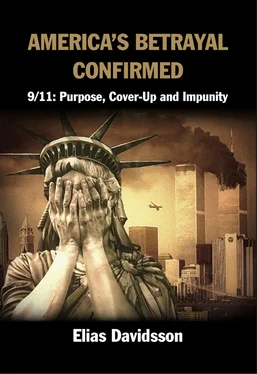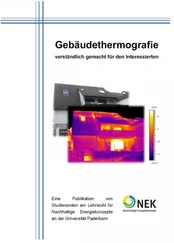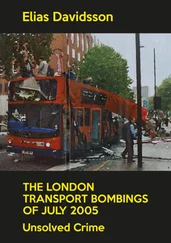Some readers may wonder why I do not discuss here the alleged role of Osama bin Laden in the attacks, if only to refute the claim of his responsibility. As will be shown, even the U.S. authorities did not accuse and charge him for 9/11. Accordingly, examining his verbal output would serve no purpose in this study.
Readers may wish to know who, in my opinion, perpetrated the crime of 9/11. I leave this question to other authors. One author, Kevin Ryan, has already made a substantial contribution in this direction with his recent book Another Nineteen: Investigating Legitimate 9/11 Suspects.
This book is organized in a modular manner which is designed to serve as a reference work on 9/11 for journalists, politicians, lawyers, researchers and libraries. Unlike most books and articles on this subject, which merely include links to internet sources – often no longer available – I have taken pains to provide easy and permanent access to most source documents by posting them on my personal website. This allows readers to easily verify the accuracy and relevancy of the facts that I present.
The modular structure of the book means that the chapters can be read in any sequence. Each chapter provides independent evidence substantiating the charge of a government cover-up and/or complicity in the crime of 9/11. This modular architecture provides not only for structural clarity but strengthens the overall conclusion.
Some Methodological Observations
The overwhelming majority of sources for this study consists of (1) official documents, i.e., statements issued by the U.S. government, its agencies, officials, members of Congress, courts and private entities acting at the behest of government authorities; (2) reports from mainstream media. Some credible monographs and blogs are also cited.
Anyone attempting to investigate suspected government malfeasance is engaging in intelligence analysis, namely sifting large amounts of data, including deceptive data to discover what is relevant. James R. Schlesinger, who has been the U.S. Secretary of Defense, Director of Central Intelligence, and chairman of the Atomic Energy Commission, explained to a Congressional Committee in 2004 the difficulties facing intelligence analysis:
Intelligence targets naturally seek to conceal what they are doing, and have a strong tendency to mislead you. A central problem in intelligence is to discern the true signals{17} amidst the noise. The relevant signals may be very weak...Moreover, false signals are deliberately planted.{18}
As will be noted throughout this book, even a cursory examination of the 9/11 case reveals a bewildering number of anomalies, contradictions and unanswered questions that in the language of intelligence analysis may amount to “noise.” I have aimed, to the best of my ability, to draw a distinction between noise and significant information.
In mathematics, we solve equations with one or several unknowns by various mathematical operations. The solution may be a single number or a set of numbers. When attempting to solve a criminal mystery, we also use formal operations to discover the unknowns. These operations include deduction, induction, tests of logical coherence, tests of reliability and plausibility, sensitivity tests, Occam’s razor, etc. Where major pieces of evidence are either inaccessible or have been destroyed, the solution to a criminal mystery may not yield a precise answer, but can provide an approximation, adequate for practical purposes. As will be shown herein, the mass murder of 9/11 may never be solved to a degree of precision sufficient for the criminal conviction of any individual. However, it can be solved to an adequate degree of precision for questioning the legitimacy of the institutions which have prevented the establishment of the truth about 9/11.
A Practical Note for Readers
Following an endnote, the reader will find in many cases a number preceded by the #-sign or the =-sign. These numbers refer to the document cached on my personal website. For document numbers preceded by #, their URL is . For document numbers preceded by =, their URL is . ‘XXX’ is the 3- or 4-digit number.
The Memoranda For the Record (MFR’s) and FBI 302 forms referred to in this book are found, for the most part, in the 9/11 Commission Records stored at the National Archives (NARA) [see ]. Where a document lacks an MFR or 302 serial number, its location (Team and Box number) will be provided to expedite the reader’s access to the document.
Chapter 1: The Road to 9/11 (the decade 1990-2001)
Established in 1922, five years after the October Revolution, the Soviet Union formally ceased to exist on 26 December 1991. On the previous day, 25 December 1991, Soviet President Mikhail Gorbachev resigned, declaring his office extinct. The dissolution of the Soviet Union was preceded by Gorbachev’s unsuccessful attempts to revive the Soviet economy, beginning in May 1985. His liberalization measures led to the emergence from 1986 onwards of nationalist movements and ethnic disputes within the diverse republics of the Soviet Union. On 7 December 1988 Mikhail Gorbachev gave a speech to the United Nations in which he pledged to cut the Soviet forces in Eastern Europe. The Berlin Wall fell in November 1989.
It is not publicly known when exactly the ruling circles of the United States and of the Western Alliance realized that the dissolution of the Soviet bloc was impending. From the time the Soviet Union withdrew its demoralized military forces from Afghanistan (1986), the telltale signs of a deep economic and structural crisis within the Soviet Union were, however, obvious. Mikhail Gorbachev’s speech to the United Nations in December 1988, cited above, left no doubt in Western minds that the Soviet Union was dying.
The impending demise of the Soviet Union and the Warsaw Pact represented for the U.S. elite and to all those who based their global policies on the paradigm of the Cold War a massive challenge but opened at the same time exciting opportunities for the U.S. to assert its global hegemony.
(1) The loss of the Soviet Threat
John Lewis Gaddis, an American conservative historian, noted in 1991 what the loss of the Soviet threat meant for American global involvement:
For the first time in over half a century, no single great power, or coalition of powers, poses a “clear and present danger” to the national security of the United States… The passing of the Cold War world by no means implies an end to American involvement in whatever world is to follow; it only means that the nature and the extent of that involvement are not yet clear.{19}
Even before the formal dissolution of the Soviet Union, Gregory F. Treverton, later Director at the RAND Center for Global Risk and Security and formerly vice chairman of the National Intelligence Council, expressed his awareness that a new foreign policy paradigm was necessary: “America must now address the awkward question of how to organize its defense if deprived of the Soviet threat that has driven it for forty years.”{20}
Robert W. Tucker, pointed out in Foreign Affairs, flagship publication of the Council on Foreign Relations (CFR), that to maintain the Western alliance, “a new adversary must be assumed.”{21}
Paul Wolfowitz, at the time Undersecretary of Defense for Policy, warned in 1991 that slashing military expenditures would require to send home people “who had planned to make a career in the military, [thereby throwing] away that strategic asset that’s represented by the quality of our officer corps and the quality of our enlisted people.”{22}
U.S. Representative Les Aspin elaborated as follows:
The way we design weapon systems are with the Soviet threat in mind, or use against the Soviet Union in mind. It drives everything. It drives not only the budgets, it drives the force structure, it drives the kinds of forces you have, it drives the kinds of equipment, it drives the whole business. Take away the Soviet threat and how do you design it? How do you decide what you need? How do you decide how to focus on that? [...] How do you build down the United States military and not destroy the industrial base at the heart of the United States’ military capability?{23}
Читать дальше












